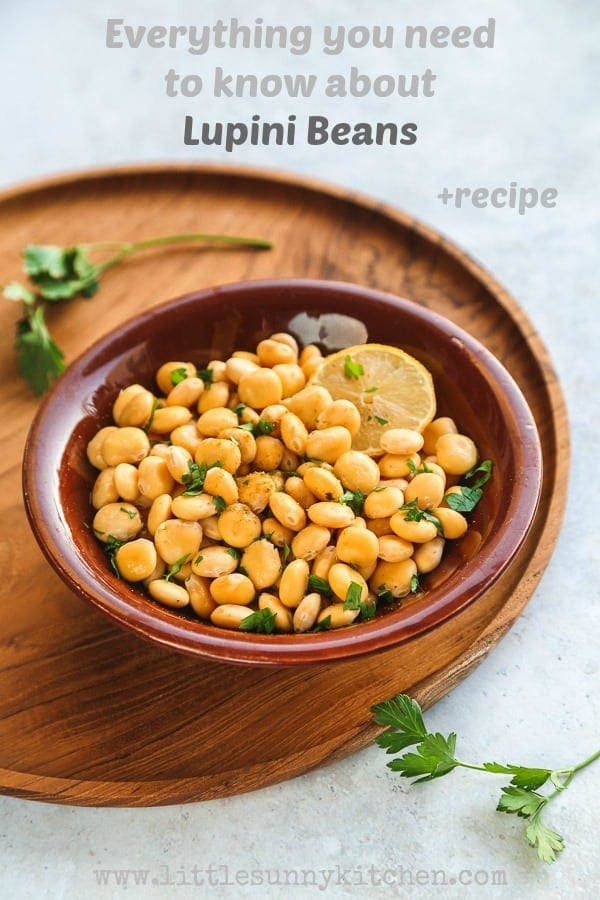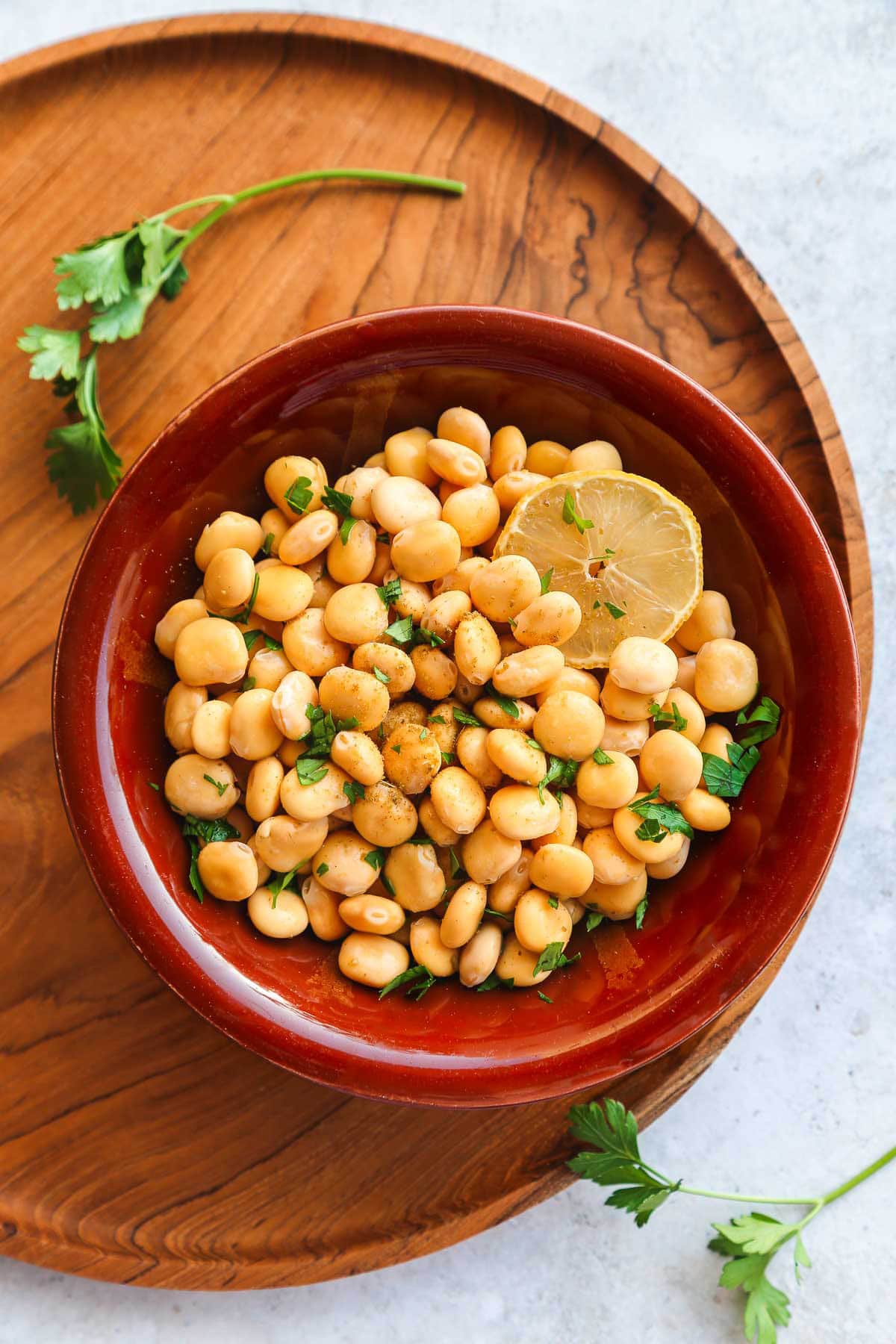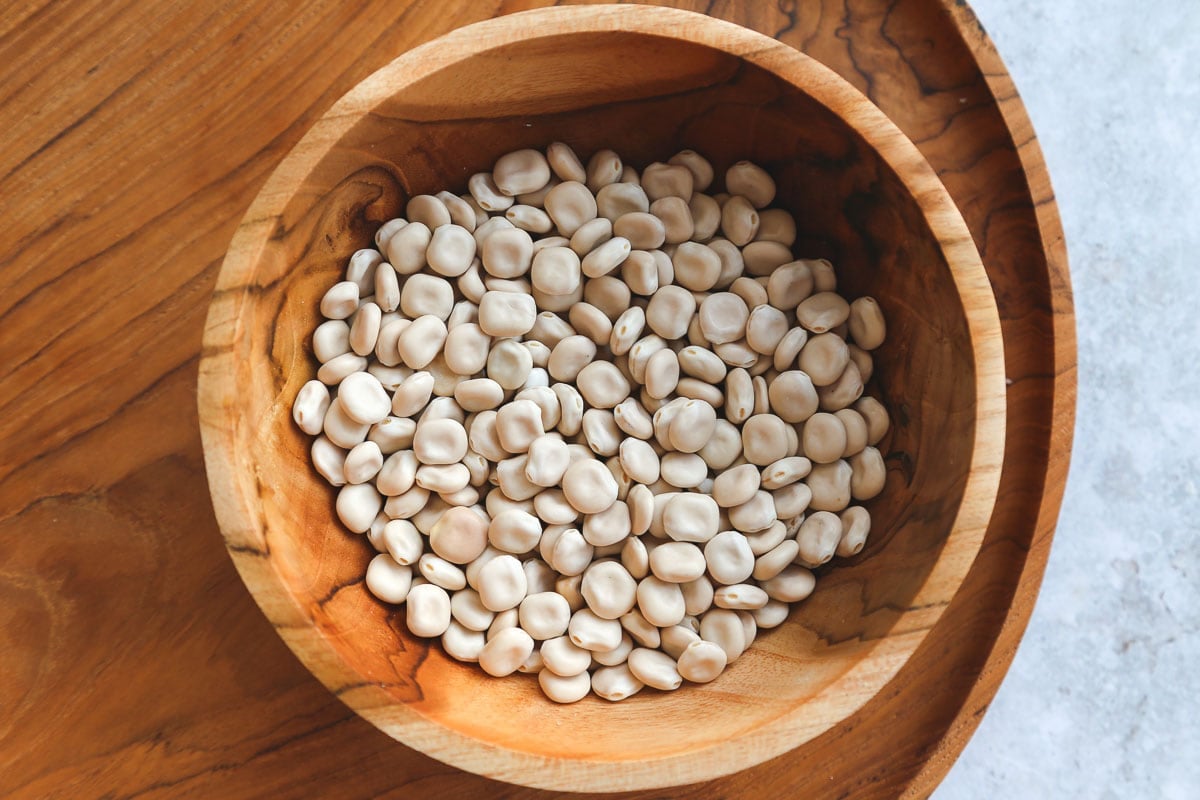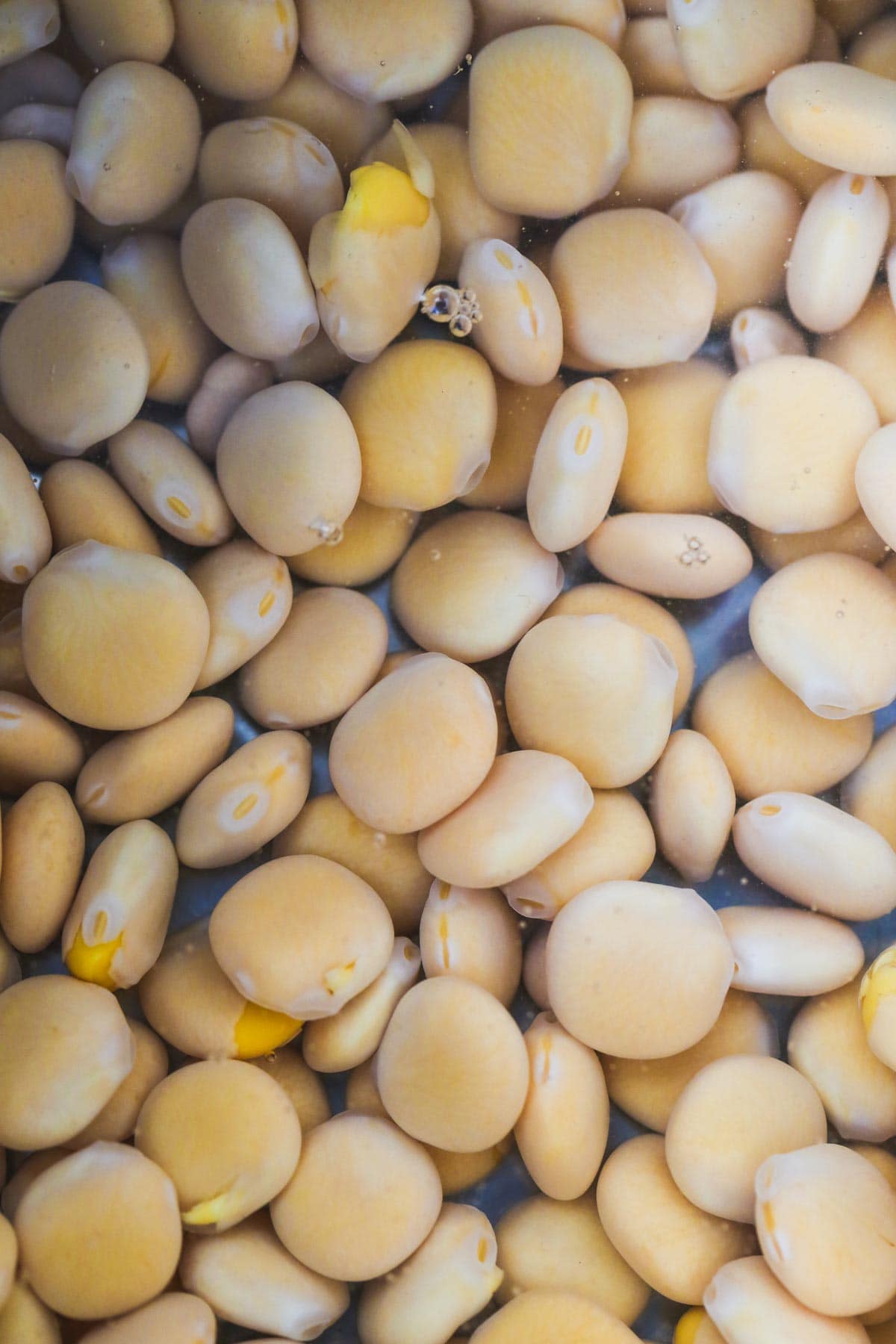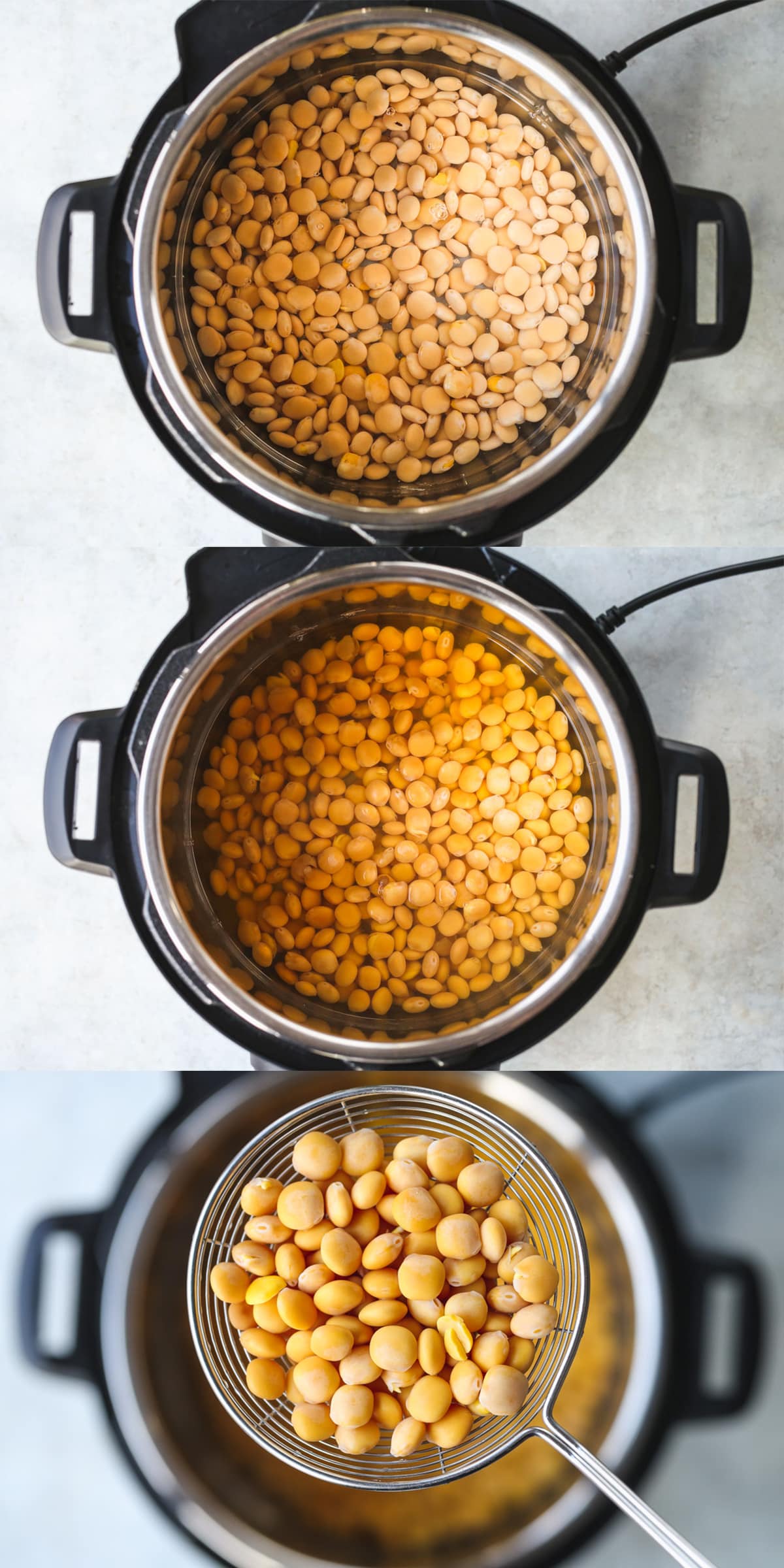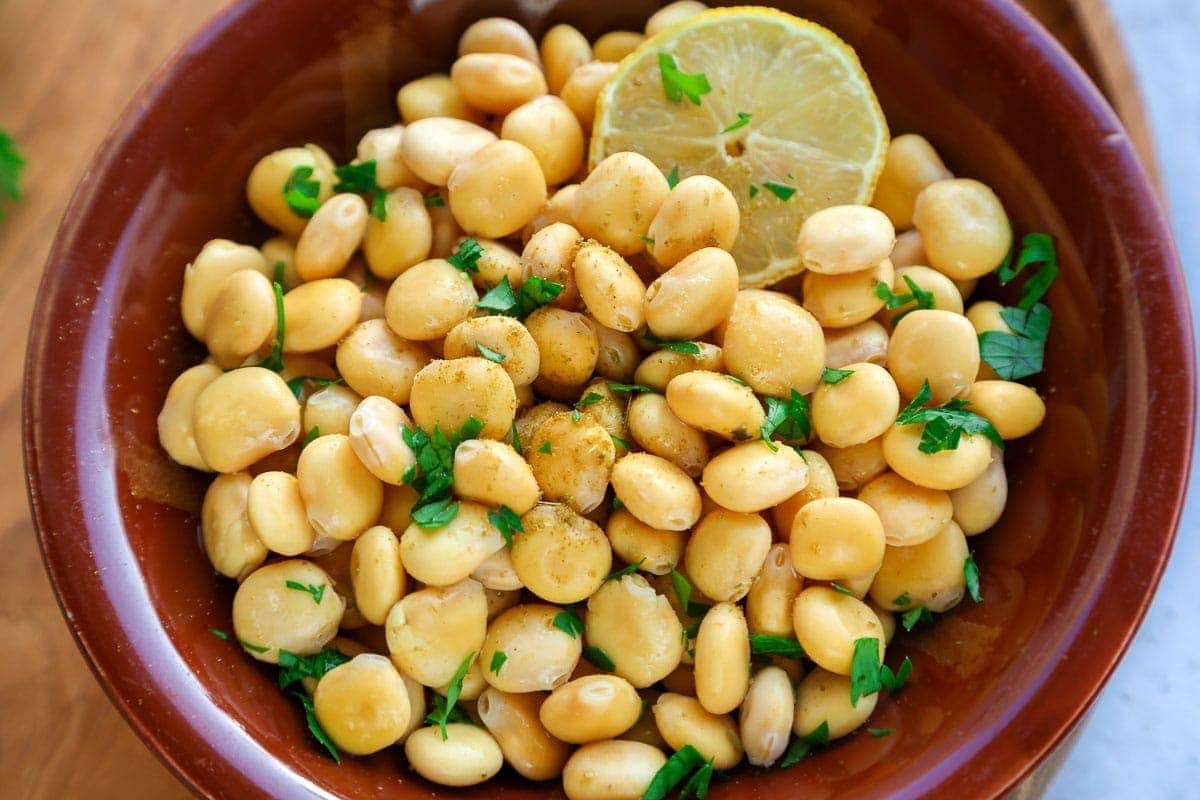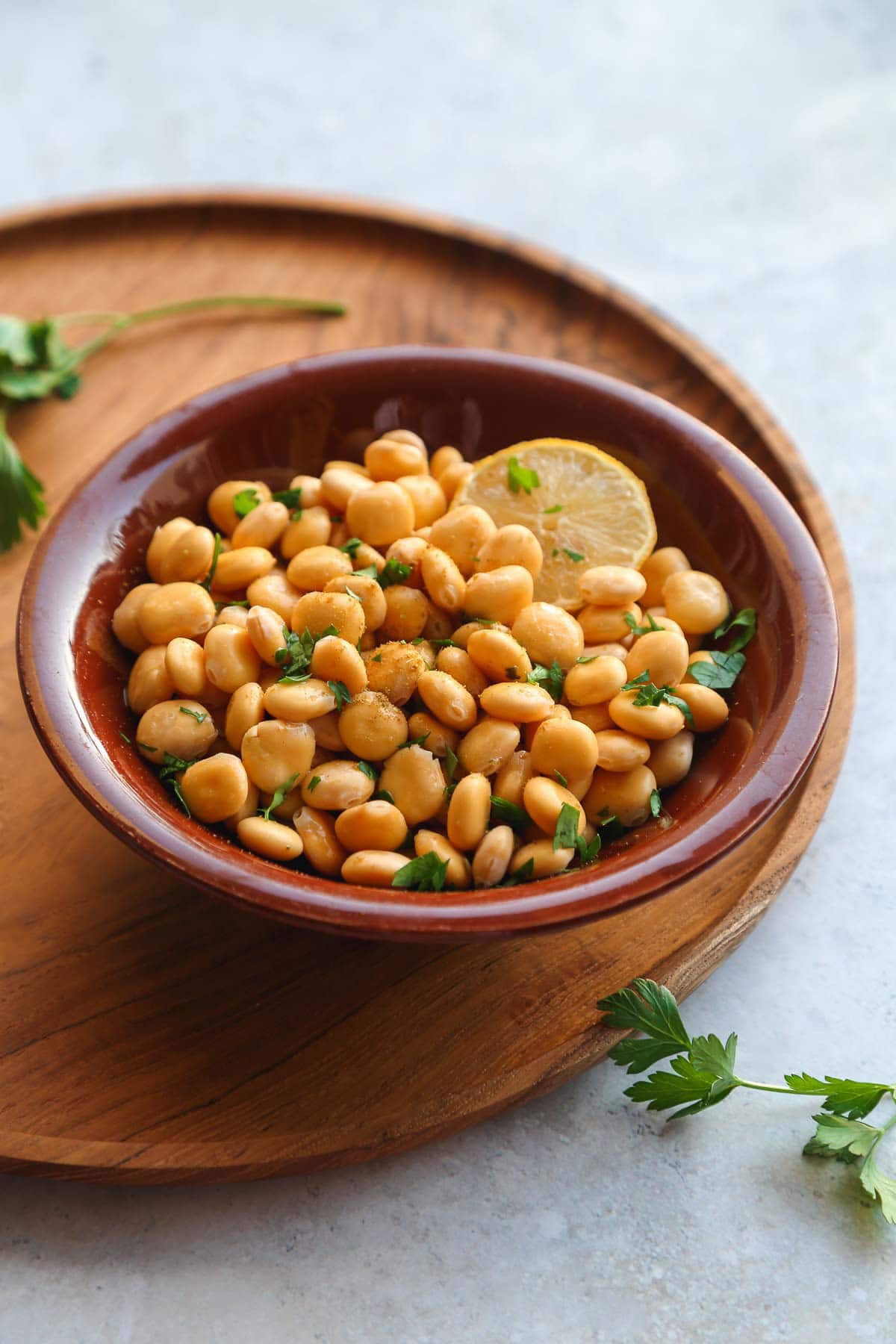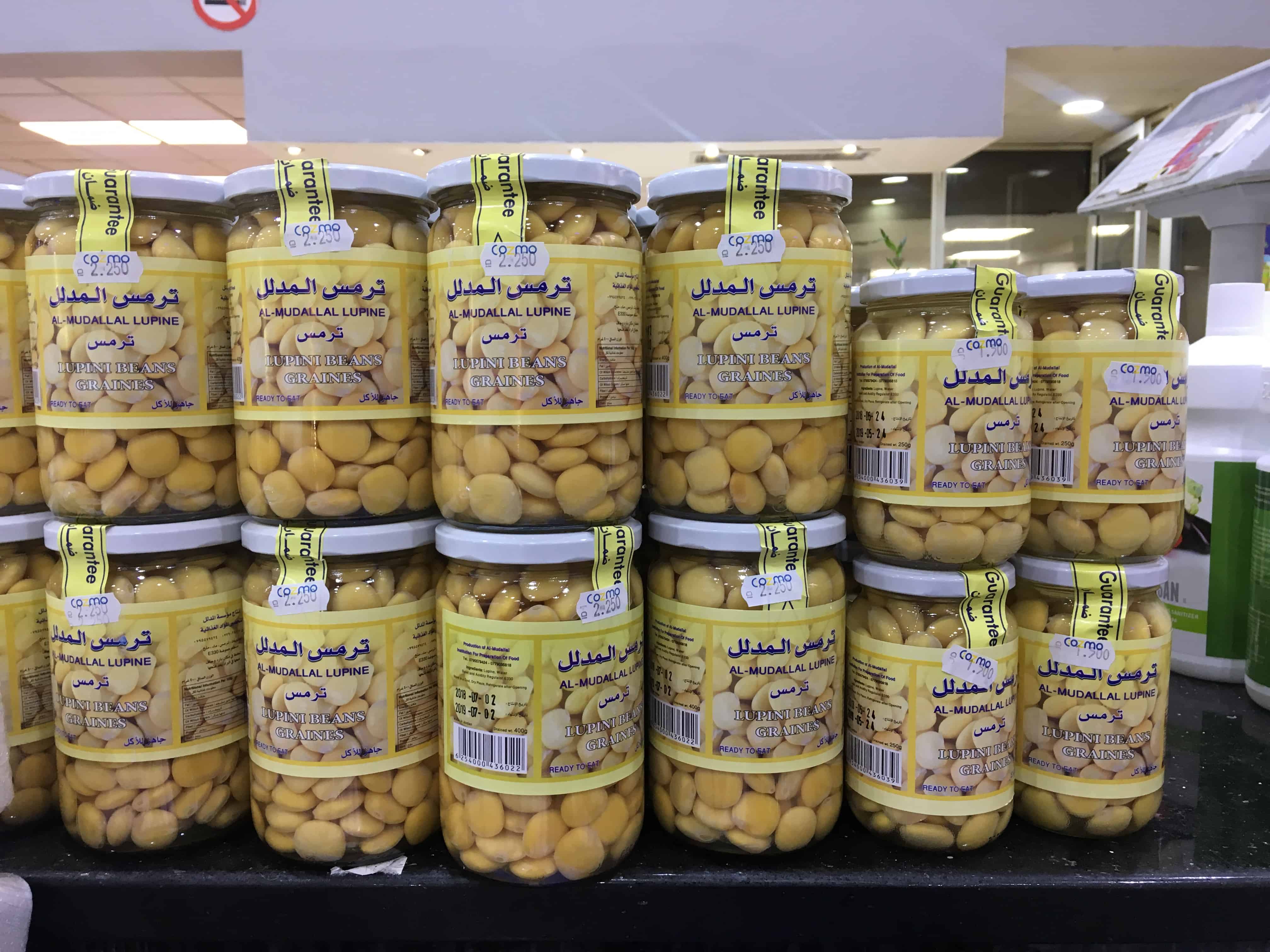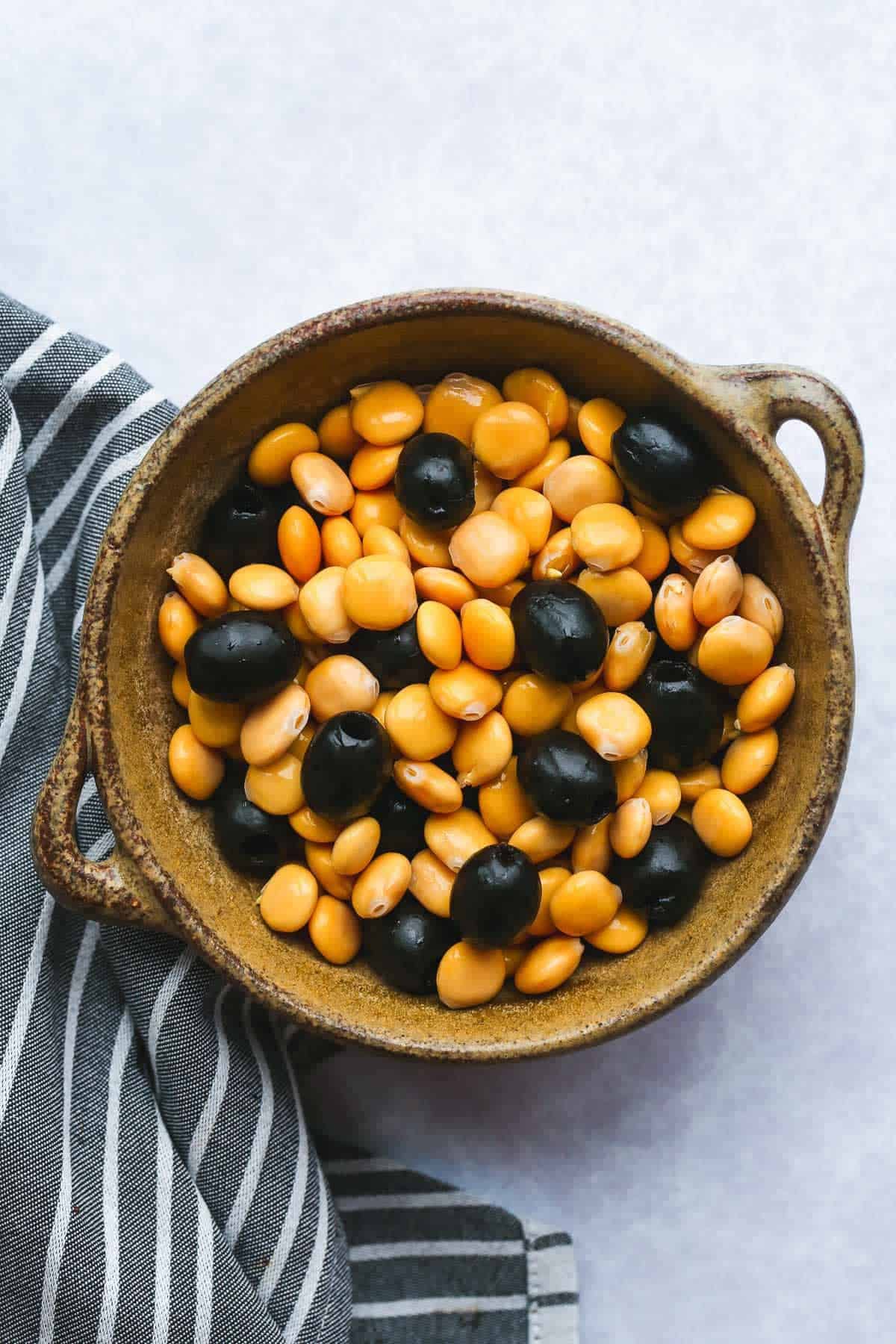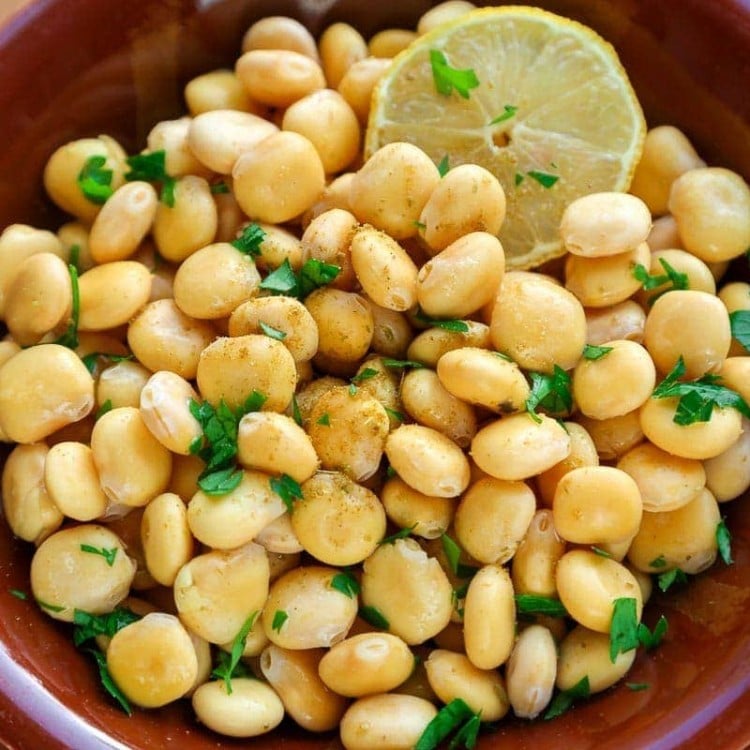What are lupini beans?
Lupini beans or lupin beans (Turmus in Arabic) are very healthy beans that can be served as snacks or antipasti. They’re very delicious and also really good for you! These beans are legume seeds. They are popular in Mediterranean countries such as Greece and Italy, and they’re also very well known in Middle Eastern countries like Jordan and Egypt. Usually served as snacks on their own or as antipasti, and popular street food in the Middle East. In Italy, lupini beans are mixed with olives to be served as snacks at Christmas time. They are also added to hot and cold salads (scroll down to see the picture). In Jordan, Turmus is usually sold dried in the supermarkets. To prepare it, it needs to be soaked in water and then cooked until it’s semi-soft. it’s quite starchy and smells a little bit like potatoes.
Benefits of lupini beans
These beans are high in protein (40%), and fiber (40%). So every 100 grams of cooked lupini beans, contain around 40 grams of protein. These beans aid in resorting and building cells, tissue and muscle in the human body. As Lupin beans are high in fiber, they are able to lower the cholesterol in the body and clean the blood vessels. So they’re also good for the heart. And finally, these beans are packed with antioxidants and can help prevent inflammation.
There are 2 kinds of dried lupini beans:
There’s a bitter variety that takes longer to prepare as it needs to be soaked for several days in water, and water needs to be changed every few hours or at least every day. Then the beans need to be cooked, and if they’re still bitter then they need to be soaked again in water. The other kind of lupin beans is sweet, these beans are not literally sweet but they’re not bitter either (the variety is just called sweet). They can be prepared quickly, by just soaking them in water for a few hours, then they’re cooked for 30 minutes or until they’re sort of soft and yellow in color.
How to cook dried lupini beans?
You can either cook Lupini beans from dried in a pressure cooker or over the stovetop. I prefer the pressure cooker method (I love using my Instant Pot!) as it saves a lot of time, and it’s just more convenient as it means that I won’t have to keep checking on the beans.
Depending on which type of Lupini beans you have, soak them in cold water (if you’re using the bitter kind then soak for days and keep changing the water, if you’re using the sweet variety then soak for a few hours of overnight and then cook). Rinse the Lupini beans, transfer to a pot or pressure cooker and cover with the lid. If you’re using a pressure cooker, then pressure cook on high for 20 minutes. If you’re cooking them over the stovetop then they will take about an hour.
Middle Eastern Lupini Beans “Turmus”
In the Middle East, you will see many street vendors selling these tasty beans that are perfectly cooked, then seasoned with cumin, salt and lots of lemon juice. Many people cook beans at home in the Middle East. They are also usually paired with beer (like bar nuts) as they make a great snack. The beans are first soaked in water, and then cooked in boiling water until they’re soft enough to eat. Ground cumin is a very important ingredient, as lupini beans can cause bloating to some people and it’s believed that ground cumin can prevent bloating. After the Turmus is cooked, add lemon juice. Then sprinkle with ground cumin and salt.
How to eat lupini beans?
Lupini beans are eaten one by one, by tearing the skin with your teeth and then popping the seed into your mouth. The beans are also used in making lupini flour, and even tofu! You can buy Lupin beans pickled, or canned in brine. They are also sold as dried beans.
Italian Lupini beans and olives
As I mentioned above, lupini beans are also popular in Italy. They’re usually served at Christmas time as antipasti or snack. Often mixed with black or green olives with pits traditionally, however, I sometimes use pitted olives which makes my life easier. I also recently found out that Lupini beans are eaten as a snack in Spain (known as chocks or altramuces), and in Portugal (known as tremoços).
How to store dried lupini beans?
Dried beans can be stored for up to 24 months in an airtight container, stored in a dry place at room temperature. © Little Sunny Kitchen
